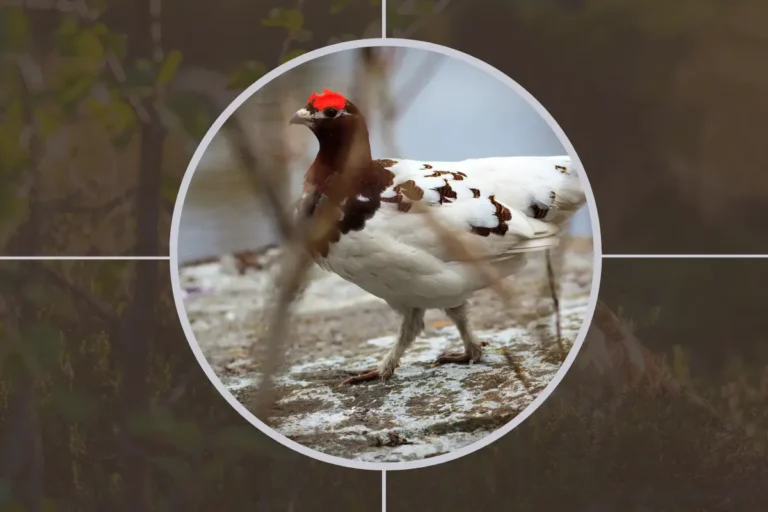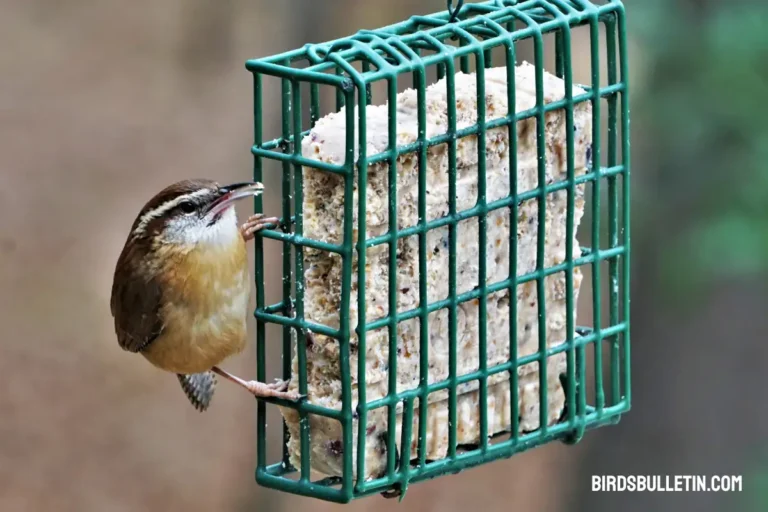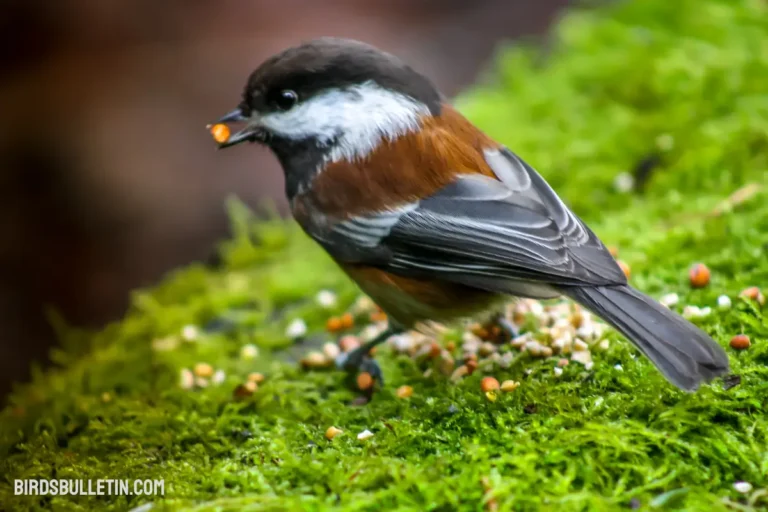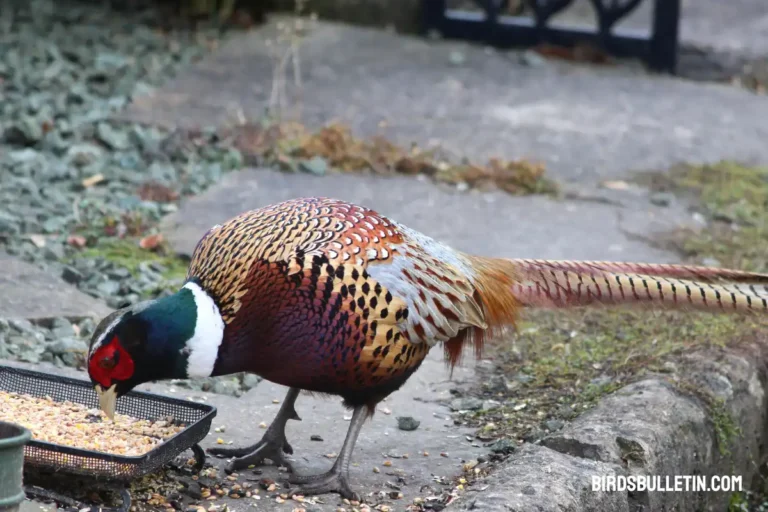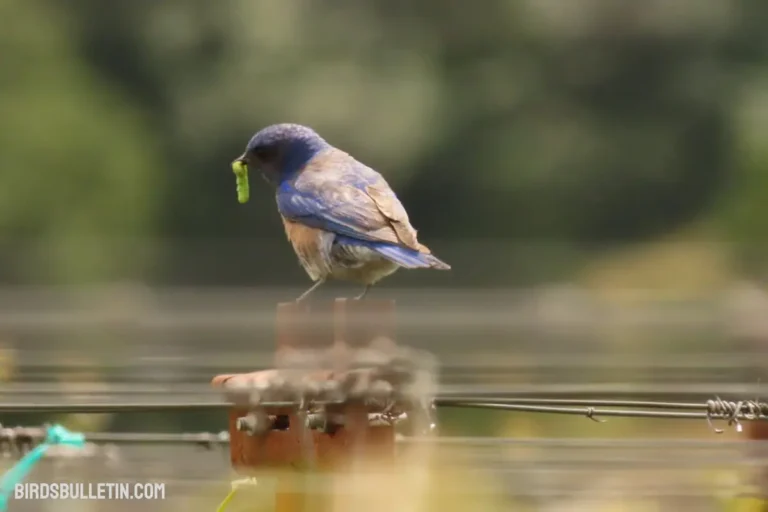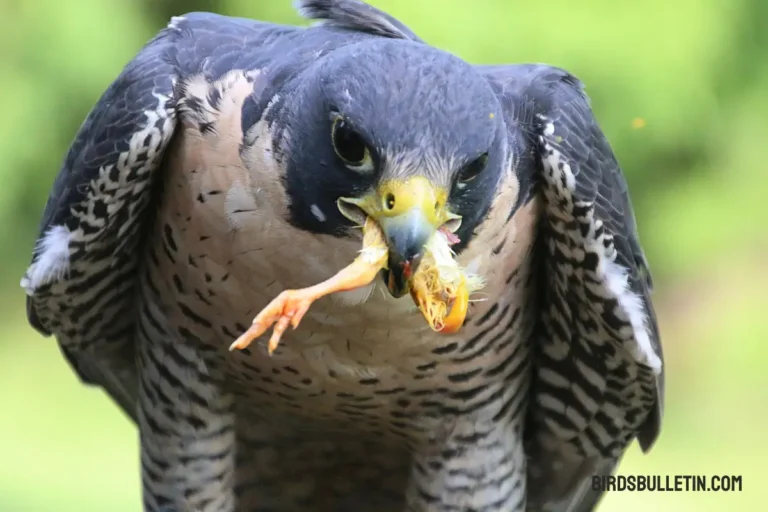What Do Chestnut-Backed Chickadees Eat?
These energetic birds can be found year-round in coniferous forests, mixed woodlands, and suburban yards.
Chestnut-backed chickadees have a varied diet that changes with the seasons. Their resourceful feeding behaviors allow them to find food in nearly any habitat.
Want to learn more about birds’ food and diet
Favorite Foods
Chestnut-backed chickadees are omnivorous, feeding on both plant and animal material. Their favorite foods include:
| Food | Details |
|---|---|
| Insects | Especially eat beetles, caterpillars, ants, and spiders. |
| Seeds | Favor conifer seeds like Douglas fir, hemlock, and spruce. Also, eat seeds of alder and birch. |
| Berries | Eat berries and fruits including elderberries, blackberries, and currants. |
| Sap | Drink sap from sapsucker-drilled holes in trees. |
Their diet consists mainly of insects and seeds foraged from conifers. They supplement their diet with berries and tree sap when available. Their favorite foods provide the energy and nutrients these active birds need.
How Chestnut-Backed Chickadees Gather Food?
Chestnut-backed chickadees have several techniques for finding food
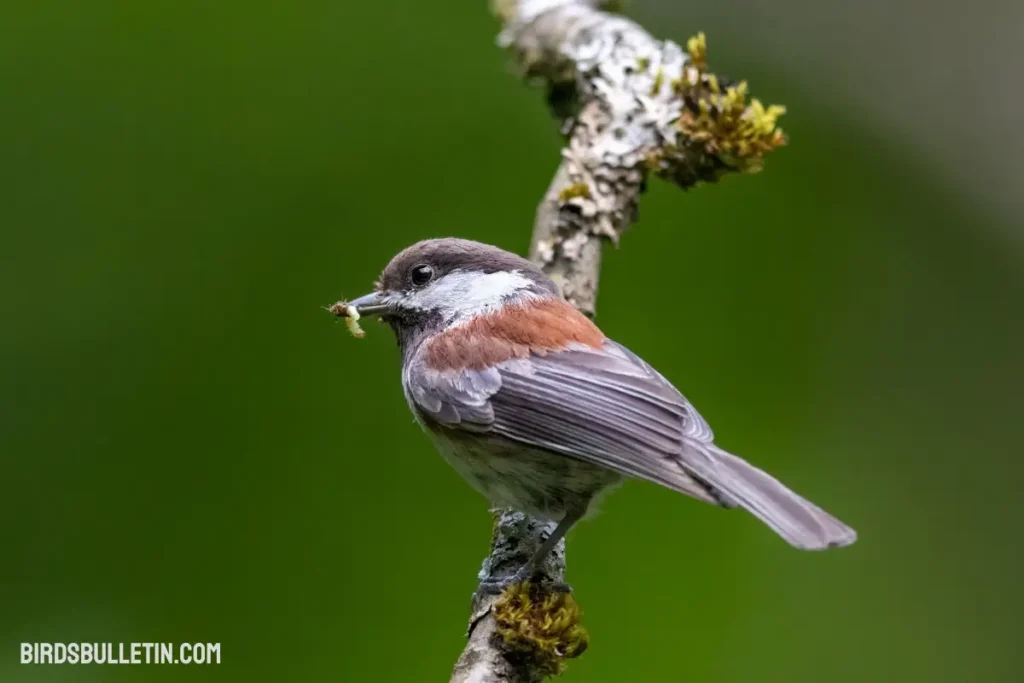
Foraging through foliage: These birds acrobatically search leaves, needles, branches, and crevices for hidden insects and spiders. Their slender, pointed beak can probe into tight spots.
Flocking feeding: In winter, chickadees form mixed flocks with nuthatches, woodpeckers, and other species to seek food over a wide area.
Storing seeds: Chickadees cache excess seeds and berries in hundreds of hiding spots, then accurately retrieve them even months later.
Feeding on suet: These birds cling to feeders to eat rendered fat. Their feet have a reversed back toe to grip vertically.
Drinking sap: Chickadees land on sapsucker holes in trees and drink the sap as it oozes out.
Winter Diet
As temperatures drop in winter, Chestnut-backed Chickadees switch from a diet comprised primarily of insects to one focused on seeds and berries. With insects in short supply, these small songbirds rely heavily on conifer seeds, foraging flocking together to scour bark and vegetation for nutrients.
Seeds from hemlock, spruce, Douglas fir, and other evergreens provide the carbohydrates and fat they need to maintain energy levels. They supplement their seed diet with berries such as elderberries, currants, and blackberries which supply key vitamins and antioxidants.
Sapsucker drilled holes also provide an important winter food source as Chestnut-backed Chickadees drink the nutrient rich sap. Their ability to adapt to seasonal changes in food availability allows Chestnut-backed Chickadees to make it through harsh winters when insect prey is scarce.
Nestling Diet
The nestling diet of Chestnut-backed Chickadees consists primarily of caterpillars, spiders, and other soft-bodied insects which adult birds forage for and bring back to the nest.
The high protein and fat content of these insects allow the rapidly growing nestlings to develop strong muscles, bones, feathers, and organs during this critical developmental stage. As the nestlings age, adults may supplement their diet with seeds and berries to transition them to the adult diet.
However, the majority of food brought to nestlings in their first couple weeks is insects, with caterpillars being the preferred choice due to their soft bodies which are easy for nestlings to digest. Delivering this energy and nutrient-rich diet is crucial for adult Chestnut-backed Chickadees to successfully raise their young from hatching to fledging.
Frequently Asked Questions
01. Do chickadees eat at bird feeders?
Yes, chestnut-backed chickadees are frequent visitors at tube feeders, suet feeders, and platform feeders with sunflower seeds and peanuts. Offering black oil sunflower seeds may attract more chickadees.
02. How do chickadees break seeds open?
Chickadees have a strong beak suited for cracking open seeds and nuts. They often perch on a branch and hold the seed down with their foot to hammer it open.
03. Why do chickadees feed on sap?
Tree sap provides a good source of sugars to fuel the active chickadees. Feeding on sap from sapsucker drill holes is an efficient way to obtain sap.
04. Do chickadees store food in winter?
Yes, a key strategy is storing tens of thousands of seeds in hidden caches throughout their territory in the fall. Their excellent spatial memory allows them to retrieve caches accurately.
Final Thought
With diverse feeding behaviors like bark-scaling, sap-drinking, and seed-caching, chestnut-backed chickadees are able to thrive across seasons and changing habitats. Their colorful acrobatic presence in northwest forests provides a flash of energy and adaptability.
Chickadees play an important role in distributing seeds and controlling insect populations, making them a valuable member of a healthy ecosystem.
References
- McCallum, D. A., Grundel, R., & Dahlsten, D. L. (1999). Mountain chickadee (Poecile gambeli). In A. Poole (Ed.), The Birds of North America. Ithaca, NY: Cornell Lab of Ornithology. https://doi.org/10.2173/bna.453
- Smith, S. B., McPherson, K. H., Backer, J. M., Pierce, B. J., Podlesak, D. W., & McWilliams, S. R. (2007). Fruit quality and consumption by songbirds during autumn migration. The Wilson Journal of Ornithology, 119(3), 419–428. https://doi.org/10.1676/06-073.1
- Vander Wall, S. B., & Jenkins, S. H. (2003). Reciprocal pilferage and the evolution of food-hoarding behavior. Behavioral Ecology, 14(5), 656–667. https://doi.org/10.1093/beheco/arg064


